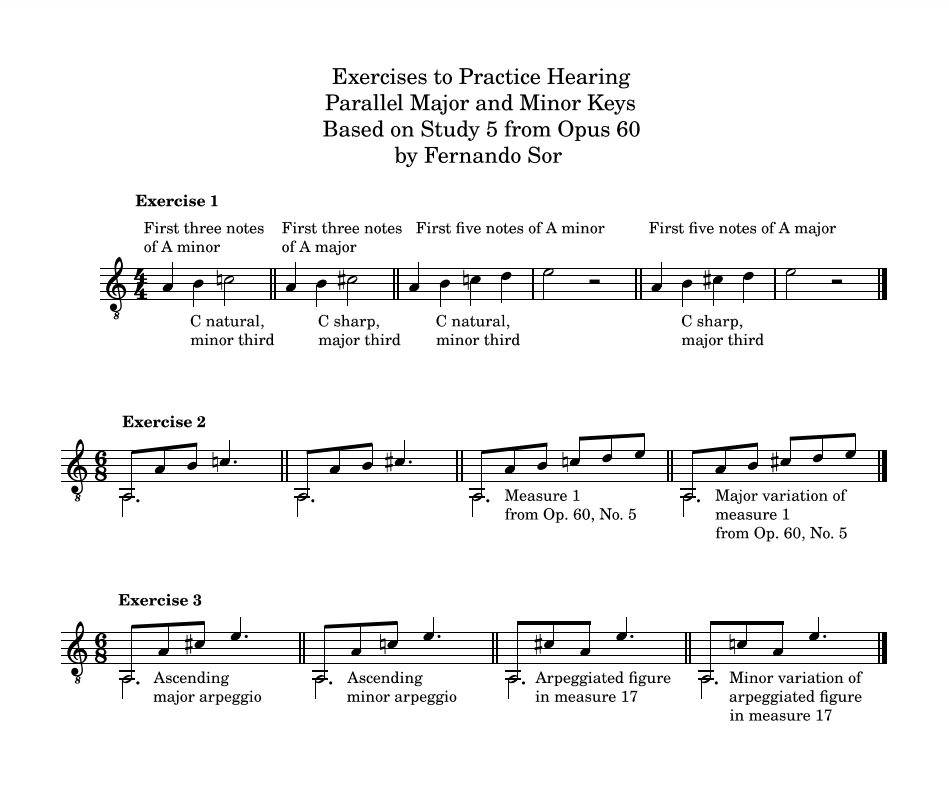In this post, I’ll focus on Opus 60, Number 5 by Fernando Sor as an example of a composition featuring parallel major and minor keys. Opus 60, Number 5 in A minor is written in ternary form. The A section (in A minor) is measures 1-16, while the B section (in A major, the parallel major) is measures 17-40. Measures 1-16 are then played again as the repeat of the A section. While just playing the study with this understanding is helpful, there are a few exercises a guitarist can play to better hear the relationship between parallel major and minor keys.
Exercise 1 consists of the first three notes of the A minor scale, followed by the first three notes of the A major scale. The next part of exercise 1 is the first five notes of the A minor scale, followed by the first five notes of the A major scale. This is not technical exercises to develop guitar playing ability, rather, it is an exercise to develop hearing major and minor thirds.
Exercise 2 is an adaptation exercise 1 using the opening figure from Op. 60, No. 5.
Exercise 3 is based on the arpeggiated figure introduced in measure 17. It begins with arpeggiated major and minor triads that follow the root, third, fifth presentation usually found in music theory textbooks. It is followed by arpeggio figure that Sor uses in measure 17, and a minor variation of this arpeggiated figure.
Even musicians who understand parallel major and minor keys can deepen their ability to hear parallel major and minor keys by practicing these exercises and playing Sor’s study.

Click the button below to download a copy of these three exercises.
